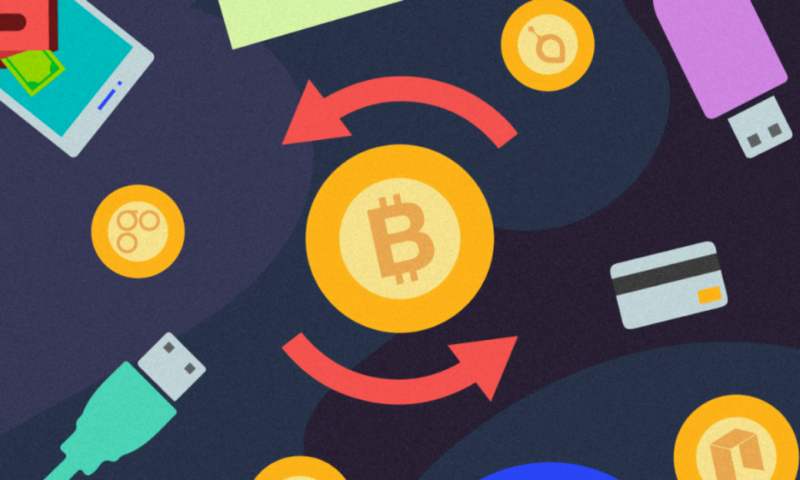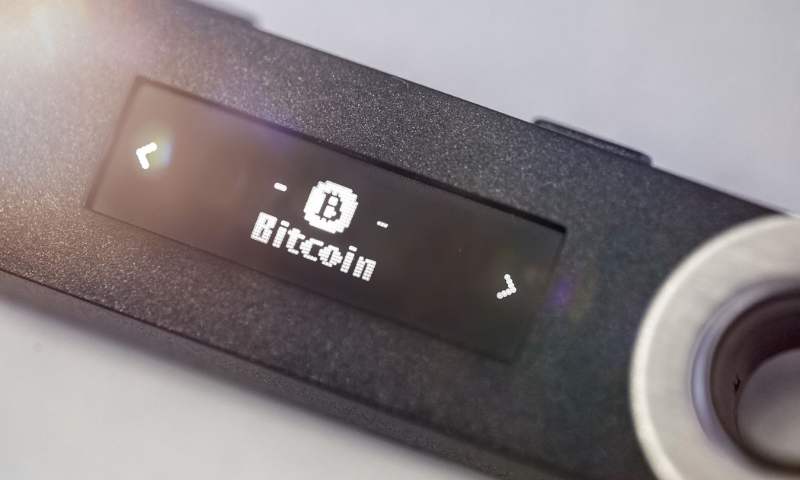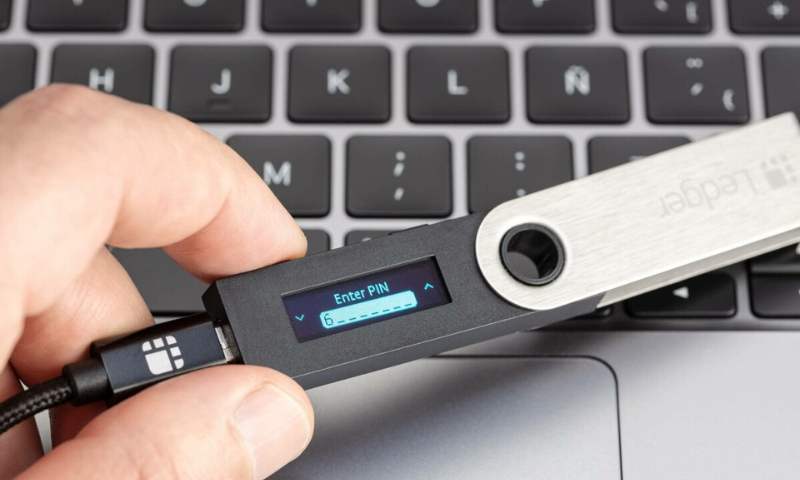How to Store Cryptocurrency Safely: A Beginner’s Essential Guide
Dive right into how to store cryptocurrency safely for beginners with this essential guide. If you’re new to the whirl of Bitcoin, Ethereum, or various altcoins, securing your digital riches can seem daunting. But fret not! I’ll steer you through the basics without tedious tech jargon. We start off with hot and cold wallets, nailing down their pros and cons for a clear choice. Next, we forge a path for your crypto-journey, introducing digital wallets suitable for novices. Sharpen your skills further with robust security tactics, because in this game, safety trumps all. Finally, I ensure you sidestep common blunders that can cost a digital fortune. Let’s lock down that cyber treasure!
Understanding Cryptocurrency Storage Basics
Hot Wallet vs Cold Wallet: Pros and Cons
Hot wallets connect to the internet. They are handy but less secure. Cold wallets, on the other hand, are offline and safer. Think of hot wallets like your cash in a pocket. It’s easy to spend but can be stolen. Cold wallets are like a safe in your home. Harder to reach, but far more secure.
Hot wallets are great for quick access and everyday use. They include mobile, desktop, and web wallets. But since they are online, hackers could attack them. Cold wallets, such as hardware or paper wallets, work best for saving large amounts of crypto. They’re offline, so they’re not vulnerable to online attacks. Yet, they’re less convenient for quick transactions.
Beginner’s Guide to Crypto Storage: Where to Start
If you’re starting with crypto, focus on secure digital wallets. Begin with a hot wallet for small, daily trades. For larger amounts, use a cold wallet. Always use trusted wallet providers. Go for brands like Ledger Nano or Trezor.
Start by setting up your wallet. Then, learn to back it up with a seed phrase. A seed phrase is a list of words that stores all the info needed to recover your wallet. Write it down and keep it safe. Avoid common mistakes like sharing your seed phrase. And always double-check apps and sites you use for trading.
For extra security, enable multi-factor authentication on your wallets. This keeps your crypto even safer. Never share your private keys or password. And be sure to stick to safe exchange platforms, especially as a beginner.
In summary, know your wallet options and choose based on your needs. Protect yourself with smart backup and security practices. Stay alert, stay safe, and you’ll master the art of cryptocurrency storage.
Choosing Your Digital Wallet
Hardware Wallets Explained: Ledger Nano and Trezor Features
When diving into the world of cryptocurrency, picking your wallet is key. Think of a hardware wallet like a safe. It stores your digital cash offline, away from hackers. Ledger Nano and Trezor are top picks. They’re like pocket-size bank vaults for your crypto.
Both come with cool safety tools. They have screens for checking transactions. You also get a PIN code. No one can get in without it. Plus, they back up your wallet to recover it if lost. This means they use unique words called a seed phrase. Write it down and keep it safe.
Ledger Nano supports lots of cryptocurrencies. So, it’s good for someone starting and wanting choices. Trezor is also user-friendly and supports multiple coins. The big perk of hardware wallets is that they are cold storage. You’re not online, so you’re safe from online thieves.
Software Wallets: Mobile and Desktop Options for Beginners
Now let’s talk about software wallets. These are apps for your phone or programs for your computer. They’re more like your everyday wallet. They’re super handy, but you need to watch them closely.
Software wallets fit into what we call hot storage. This means they’re connected to the internet. They’re great for active traders. You can get to your crypto fast. But, you need to be smart about security.
Here’s how:
Make sure you download the right app. Some out there are fakes. Only trust apps from official stores or websites. Use a strong password that’s hard to guess. Mix letters, numbers, and symbols. Add an extra lock on top of your password. This is called multi-factor authentication. It sends a code to your phone or email. Nobody gets in without this code.
Make backups of your wallet often, using a seed phrase just like with hardware wallets. Keep this list of words safe. If your phone or computer dies, you can still get to your money.
There you have it. Choosing between a hardware wallet or a software wallet matters. It depends on how active you are with your crypto and how you balance safety and ease of use. Both are fine choices for someone just starting out. Just remember, with software wallets, stay sharp with security. With hardware wallets, enjoy the peace of mind that comes with extra safety. Your digital cash is important. Keep it in a wallet that’s right for you.
Security Measures for Protecting Your Crypto Assets
Encryption and Multi-Factor Authentication for Crypto Security
When you enter the world of crypto, security is key. Your assets’ safety relies on robust defenses. This is where encryption and multi-factor authentication (MFA) come in.
Encryption hides data, making it unreadable without the right key. For crypto, it stops thieves from stealing your coins. Even if they get your wallet file, without the key, it’s useless. It’s like a safe that only opens with your unique code.
MFA adds an extra level of security. With MFA, you use two steps to get into your account. Think of your front door. What if, aside from a key, it needed a special code? Even if someone had your key, without the code, they can’t get in. For your crypto wallet, this might be a password plus a code from your phone.
Use MFA every time you can. It might seem like extra work, but it stops hackers in their tracks. You keep your email, bank, and social media safer with MFA. So why not your crypto? It’s like wearing both a seatbelt and a helmet when biking.
When you pick a wallet, make sure it supports encryption and MFA. Your future self will thank you for taking these steps now.
The Role of Seed Phrases in Wallet Recovery and Backup Strategies
Losing access to a crypto wallet is a real fear. But with seed phrases, you keep a backdoor to your digital funds. A seed phrase is a list of words that act as a master key to your wallet. If your device breaks or is lost, the seed phrase is your way back in.
Always write down your seed phrase. Keep it on paper, and store it in a safe place. Think of it like the spare key to your house. You don’t carry it with you, but it’s there when you need it. And just like you wouldn’t give out your house key, never share your seed phrase.
Backup strategies often include seed phrases. Without this, you might lose your crypto forever if something goes wrong. It’s like having a game plan if your boat sinks. You want a life jacket and a liferaft ready to go.
Some folks go even further and use a metal backup for their seed phrase. This is just writing those words onto metal that can survive fire or water. It’s your plan for the worst-case scenario.
Remembering your seed phrase is not enough. Write it down, keep it safe, and make sure it’s never online. This way, you protect against hackers and accidents.
By using encryption, enabling MFA, and securing your seed phrase, you build a mighty fortress around your crypto assets. This gives you peace of mind, so you can focus on the fun part of crypto – watching your investments grow.
Avoiding Common Pitfalls and Enhancing Security
How to Recognize and Avoid Phishing Scams in Crypto
Have you heard about phishing scams? They’re tricks to steal your info. It’s like someone fishing to catch your personal details. But instead of fish, they want your crypto keys. So, what can you do? First, always check emails and URLs carefully. Scammers may use fake sites that look real. If an email or site asks for your key or password, it’s a red flag. Real crypto services never ask for these.
How can you be sure it’s a scam? Look at the email address. Does it match the service you use? Check for odd words or bad grammar. Those are signs of a phishing email. And never click on links or attachments from sketchy emails. Doing these things helps to keep your crypto safe.
Best Practices in Crypto Storage and Security Checklists
Storing your cryptocurrency can seem tough. But with a few tips, it’s simple and safe. First, understand hot and cold wallets. Hot wallets connect to the internet. They’re easy to use but not the safest. Cold wallets are like safes. They’re offline, so they’re super secure. Keep most of your crypto in a cold wallet, like a hardware wallet or paper wallet.
Next, use hardware wallets for their strong security. Companies like Ledger Nano and Trezor make them. They keep your crypto offline and away from hackers. Also, think about backup. Write down your recovery seed phrase. It’s a bunch of words that let you access your wallet if something happens. Keep this phrase safe, maybe in a metal backup to prevent damage or loss.
Always use strong passwords and multi-factor authentication. This adds more walls for hackers to try and break through. But don’t worry! Your patience here means better safety. And listen to this – update your software. Yes, those updates we often ignore. They patch up security holes, giving you better defense.
Finally, download apps and software from trusted sources only. If an app seems fishy, stay away from it. Keep a checklist of these things. Tick each one off and sleep easy knowing your crypto is tucked away safely. Remember, keeping your cryptocurrency safe is kind of like taking care of a treasured item. You guard it well and make sure it’s in the right place.
Staying alert, using safe tools, and following a solid game plan will ensure your digital treasure remains just that – a treasure. With these steps mastered, you can step confidently into the cryptocurrency world, ready to protect and grow your digital assets.
We’ve learned a lot today about keeping digital money safe. We started with the basics of storing cryptocurrency, weighing the good and bad of hot and cold wallets, and guiding beginners on where to begin. Next, we looked into picking out your digital wallet, touching on both hardware options like Ledger Nano and Trezor, and software solutions for your phone or computer.
We didn’t stop there. We dove into heavy-duty security steps like encryption and two-factor checks to keep hackers away from your stash. Remember, seed phrases are your safety net for when things go sideways.
Finally, we tackled the sneaky tricks like phishing scams and listed smart moves to keep your crypto safe. It’s a jungle out there, but with these tips, you’re set to navigate it like a pro. Guard your digital treasure fiercely and you’ll be ahead of the game. Stay safe!
Q&A :
What Are the Safest Ways for Beginners to Store Cryptocurrency?
Storing cryptocurrency securely can be a daunting task for beginners. Utilizing hardware wallets is one of the most secure methods, as they store private keys offline. Software wallets that are reputable can also be effective, especially when combined with best practices like regular backups and strong passwords. Multi-factor authentication adds an extra layer of security.
Can You Explain Cold Storage vs. Hot Wallets for Storing Cryptocurrency?
Cold storage refers to keeping a reserve of cryptocurrency offline, which protects it from online hacking risks. This includes hardware wallets, paper wallets, and other physical mediums that are not connected to the internet. On the other hand, hot wallets are connected to the internet and while they offer convenience for regular transactions, they can be more vulnerable to cyber threats.
How Do Beginners Ensure Safety When Using Software Wallets for Cryptocurrency?
For beginners, software wallets are a user-friendly option. To ensure maximum safety while using them, one must ensure that the computer or device is free of malware, always keep the software updated to the latest version, use strong and unique passwords, and activate two-factor or multi-factor authentication. Additionally, it’s crucial to make regular backups to recover your funds in case of device failure or theft.
Is Two-Factor Authentication Important for Cryptocurrency Storage?
Yes, two-factor authentication (2FA) is crucial for enhancing the security of your cryptocurrency storage. It adds an additional verification step when accessing your funds, which makes it harder for unauthorized users to gain access even if they have your password. Most wallet providers offer various forms of 2FA, including SMS codes, email verification, or through dedicated authentication apps.
For a Beginner, What Should You Avoid When Storing Cryptocurrency?
Beginners should avoid several common pitfalls when storing cryptocurrency. These include using wallets from untrusted sources, exposing private keys or seed phrases online or to others, neglecting to create backups of their wallets, and disregarding software updates. Additionally, storing large amounts of cryptocurrency in hot wallets or exchanges can increase the risk of theft, so it is better to keep the majority in cold storage.






